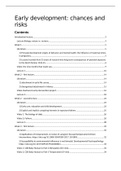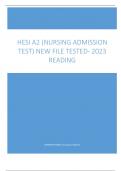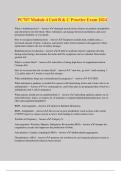Summary
EARLY DEVELOPMENT summary of all LECTURES, LITERATURE & VIDEOS
- Course
- Institution
This summary includes all of the lectures and the required literature and information from the videos (so everything you need to know for the exam) for this course.
[Show more]






